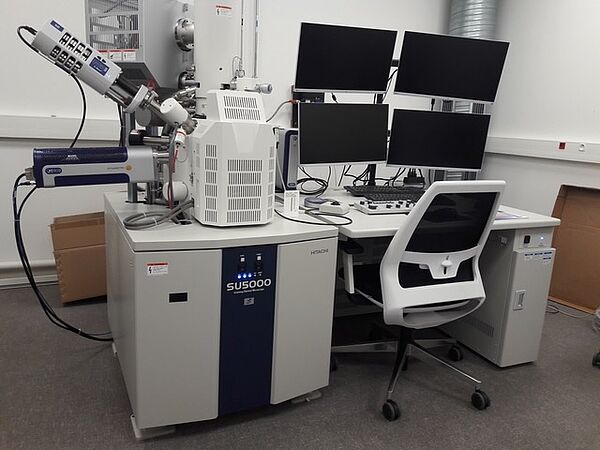SEM HITACHI SU 5000
The Hitachi SU 5000 scanning microscope is a device with a FEG source.
It combines nanometric spatial resolution, very efficient analytical capabilities in EDS and EBSD and the possibility of working in degraded vacuum.
- Thermally assisted Schottky FEG which allows current stability <1% over 12 hours.
- Acceleration voltage ranging from 10 V to 30 kV.
- Possibility of working in low vacuum (LV) conditions with variable pressure from 10 to 300 Pa. No apperture is necessary to work in LV mode, so there is no loss of current or modification of the field of observation.
- Continuous probe current up to 200 nA.
- Magnification from x10 to x1 500 000.
- Spatial resolution: 1.2 nm at 30 kV, 3 nm at 1 kV and 3 nm at 15 kV under 50 Pa of pressure in the chamber.
- Possible observation of samples 130 mm in diameter and 80 mm high.
- Detectors of secondary and backscattered electrons in high vacuum and in "low vacuum" mode.
- EDX/EBSD AZtec coupled system from Oxford Instruments (60 mm² SDD detector and EBSD Symmetry camera) which also allows EBSD analyzes on thin samples (TKD).
- It should be noted that the EBSD camera is with the CMOS technology, which allows ultra-fast acquisition at some loss of resolution (i) EBSD mapping 10 times faster than with a conventional EBSD camera; (ii) Possibility of working on fragile samples, including TKD.


